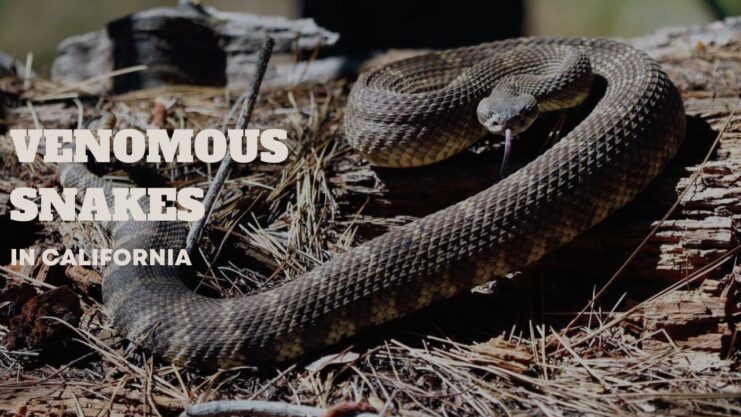Welcome to the wild and wicked world of venomous snakes in California! Get ready to slither through an adventure like no other as we dive into the intriguing realm of these reptilian troublemakers.
From the sun-drenched deserts to the lush coastal regions, California is home to an array of venomous serpents that add a touch of danger to the Golden State. Join us as we unravel their secrets, marvel at their adaptations, and learn how to navigate their venomous charms.
This article will delve into the world of venomous snakes in the state providing valuable insights into their characteristics, habitats, and behaviors. Let’s jump right into it!
A Closer Look at the State’s Dangerous Beauties
This state is home to several species of venomous snakes, most notably the rattlesnakes. These snakes are part of the Viperidae family, known for their specialized venom glands and heat-sensing pits on their faces. They use their venom, a complex mixture of enzymes, to immobilize and kill prey.
Rattlesnakes: The Most Common Venomous Snakes
The most common venomous snakes in California are the rattlesnakes. You can easily identify them by their distinct triangular-shaped heads and the iconic rattle at the end of their tails. However, it’s important to note that rattlesnakes do not always rattle before striking, and in some cases, the rattle may be missing or broken off.
1. Western Diamondback Rattlesnake
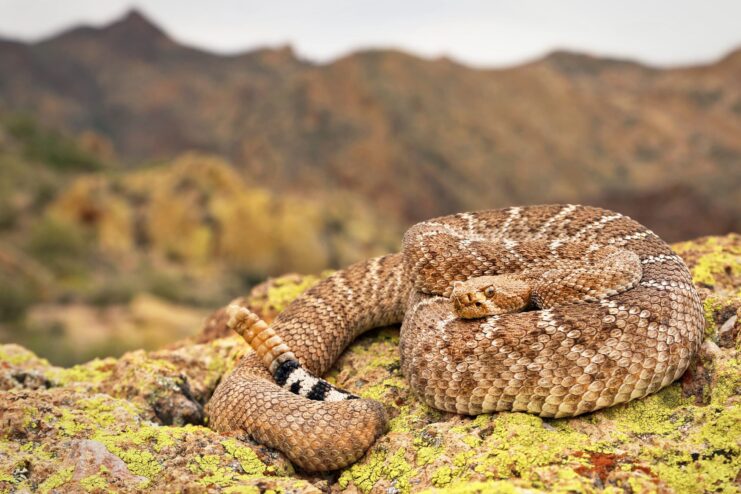
The Western Diamondback Rattlesnake is found in the southeastern part of the state. They boast various colors and have triangular heads and segmented tails.
2. Northern Pacific Rattlesnake
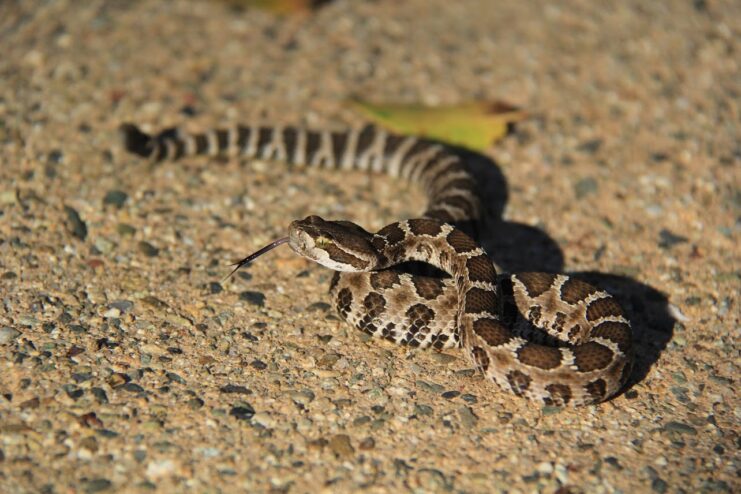
The Northern Pacific Rattlesnake has a brown or gray coloration with dark blotches. This species is common and widespread throughout the state.
3. Southern Pacific Rattlesnake
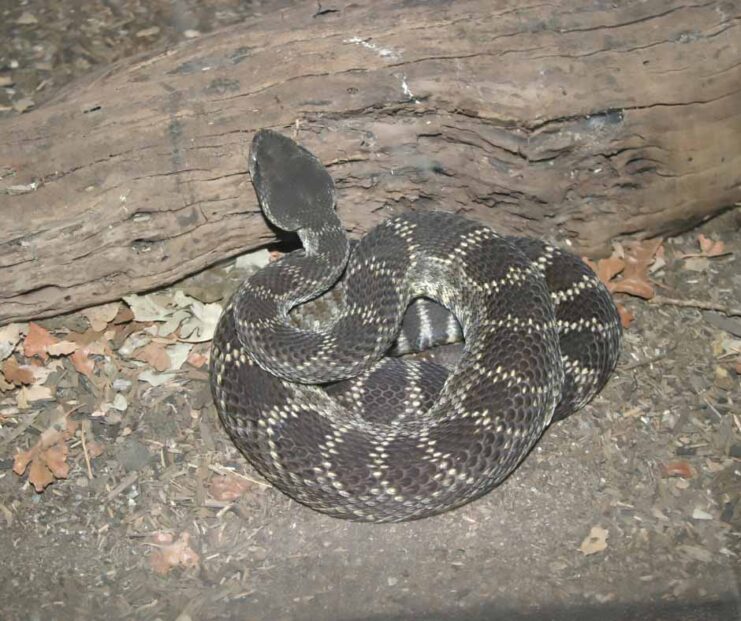
The Southern Pacific Rattlesnake is another common species. It usually does not grow beyond 3.5 feet in length and is found in various habitats across the state.
4. Mojave Rattlesnake
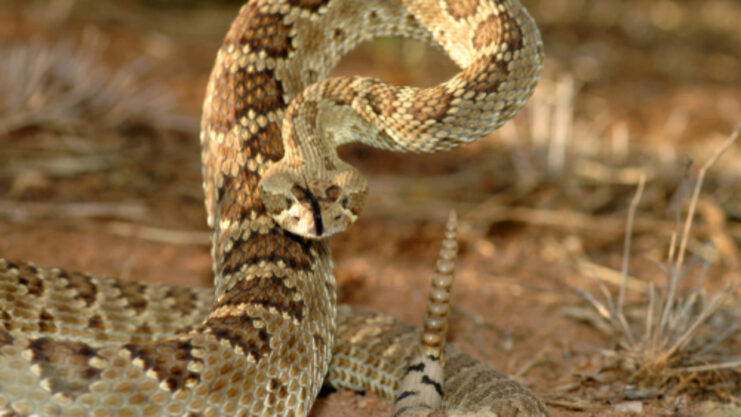
The Mojave Rattlesnake is particularly noteworthy due to its potent venom, which is more dangerous than that of some other species. One can typically spot her in the desert regions of California.
| Snake Species | Description | Habitat |
|---|---|---|
| Western Diamondback Rattlesnake | Various colors, triangular heads, segmented tails | Southeastern California |
| Northern Pacific Rattlesnake | Brown or gray coloration with dark blotches | Widespread throughout the state |
| Southern Pacific Rattlesnake | Usually does not grow beyond 3.5 feet | Various habitats across the state |
| Mojave Rattlesnake | Known for its potent venom | Desert regions of California |
Other Venomous Snakes in the Golden State
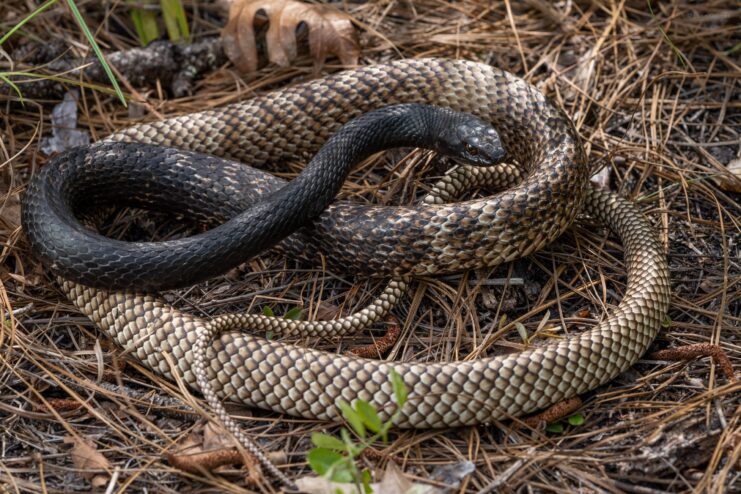
In addition to the venomous snakes, California is home to a variety of other snake species that are commonly encountered. The Gopher snake, for instance, is very common throughout the state and is often found in yards and gardens. The Coachwhip, also known as the Racer, is common in the desert and southern California coastal region and is sometimes found in suburban yards.
The Ring-necked snake is common throughout much of the state and is gray with a light ring around the neck and bright orange or yellow on the belly and under the end of the tail. Lastly, Garter snakes are common throughout much of the state and are typically found in areas near water. These species are not dangerous to humans and play important roles in the ecosystem.
Understanding the Risk
While the presence of venomous snakes may cause concern, it’s important to remember that snakes do not aggressively attack humans. Most snake bites occur when a snake is startled or feels threatened. In fact, about 90 percent of snake species in the U.S. are harmless.
The severity of a snake bite depends on the species of the snake and the size of the victim. Rattlesnake bites are hemotoxic, disrupting blood vessels and causing swelling and bleeding. Mojave rattlesnake bites are neurotoxic, causing paralysis. Regardless of the species, a snake bite should always be treated as an emergency and requires immediate medical attention.
For those interested in learning more about venomous snakes, there’s a comprehensive resource that provides detailed information about the species found in Arizona, which can be accessed here.
Coexisting with Snakes: Prevention and Safety
While venomous snakes can pose a risk, they also play an important role in the ecosystem as predators. They help control rodent populations, and there are even some medications for treating diabetes and heart disease that are derived from snake venom. Therefore, killing snakes is unnecessary in most encounters and can be harmful to the environment.
If you encounter a snake, the best course of action is to leave it alone. Most snakes will avoid humans if given the opportunity. If a dangerous snake is found on your property, it is recommended to have a professional remove and relocate it rather than attempting to kill it yourself.
| Action | Description |
|---|---|
| Immediate Medical Attention | Regardless of the species, you should always treat a snake bite as an emergency and seek immediate medical attention. |
| Avoid Provoking Snakes | Most snake bites occur when a snake is startled or feels threatened. Avoid provoking snakes and give them space. |
| Professional Removal | If a dangerous snake is found on your property, it is recommended to have a professional remove and relocate it. |
| Do Not Kill Snakes | Killing snakes is unnecessary in most encounters and can be harmful to the environment. |
Frequently Asked Questions
1. What is the most venomous snake in California?
The Mojave Rattlesnake has the most potent venom among the Californian snakes.
2. Where can you find a venomous snake in California?
You can find venomous snakes, particularly rattlesnakes, throughout the state. They inhabit various environments, from deserts to coastal regions.
3. Does California have vipers?
Yes, California is home to several species of vipers, most notably the rattlesnakes.
4. Are there venomous snakes in the Bay Area?
Yes, the Bay Area is home to several species of venomous snakes, including the Northern Pacific Rattlesnake.
Conclusion
As our venomous escapade through California comes to a close, it’s clear that these slithering creatures are as fascinating as they are fearsome. While caution is paramount when encountering venomous snakes, let’s remember that they are an essential part of our natural world.
So, whether you find yourself hiking through the mountains, exploring the deserts, or simply appreciating California’s remarkable wildlife, always embrace the awe-inspiring allure of these venomous serpents from a safe distance.

